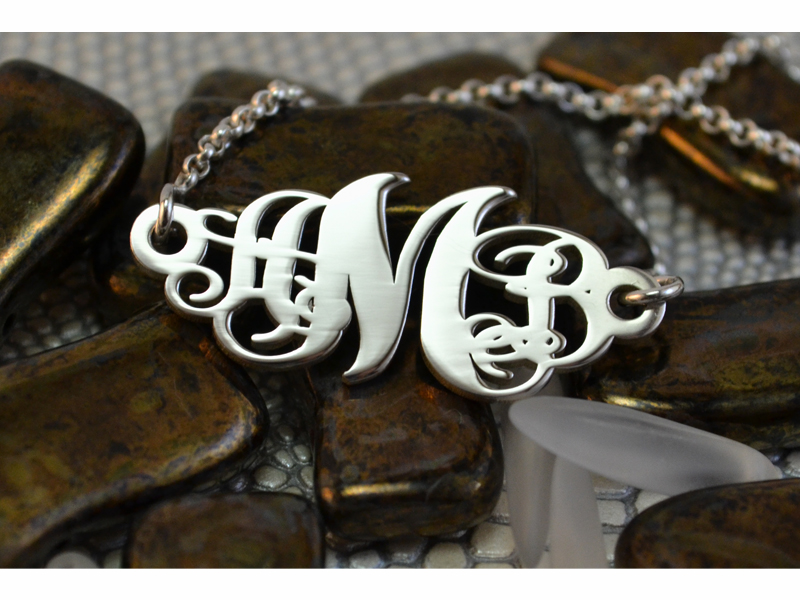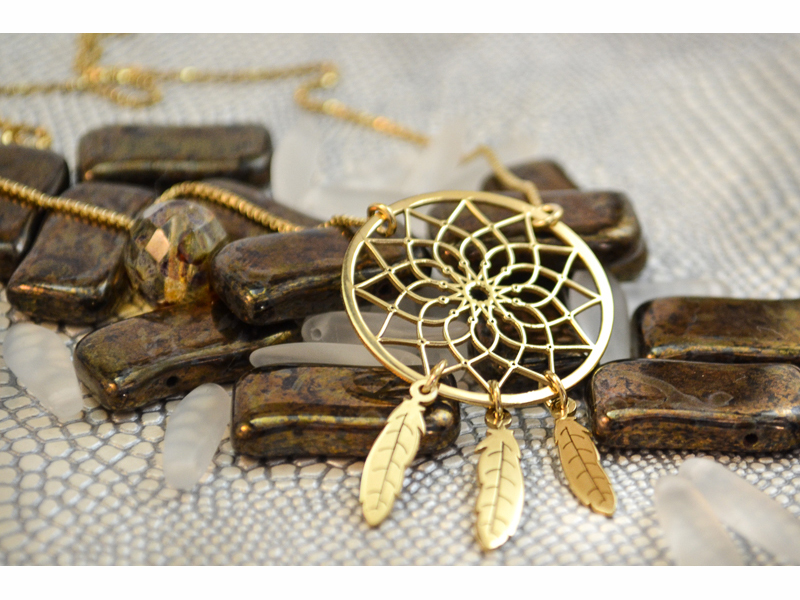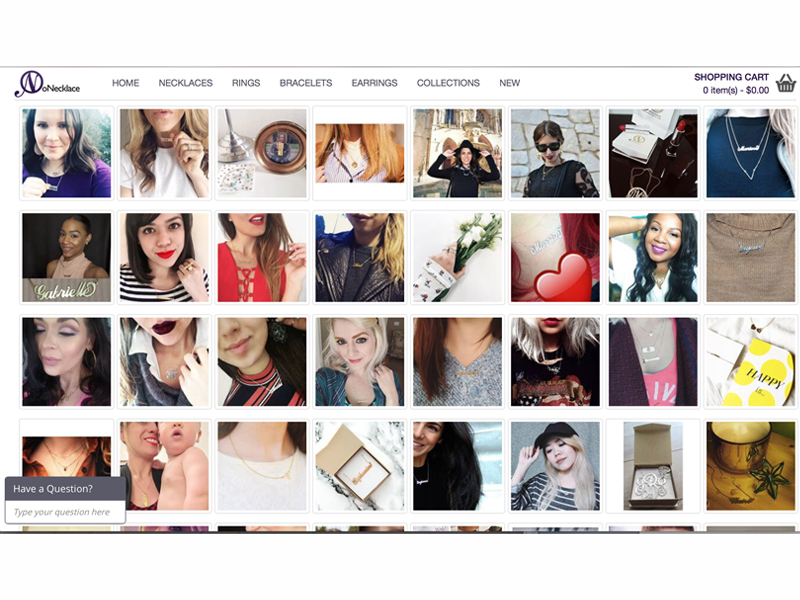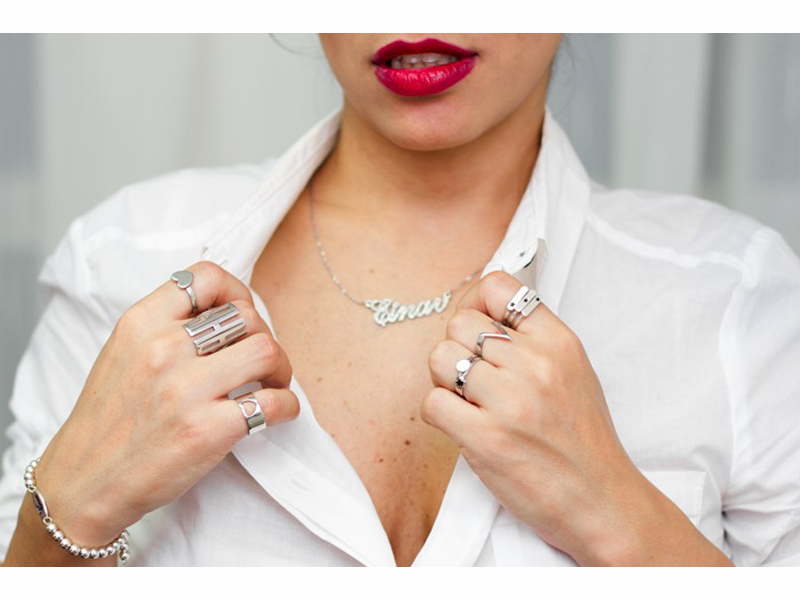
Onecklace specializes in individually made jewelry pieces, hand crafted to customers’ specifications. They launched in 2012, have met with a lot of success, and became a corporate sponsor of AJF this year, for which we are very grateful. The founder and CEO of the company, Jonathan Oz-Ari, tells us why customer satisfaction defines the company’s mission, speaks about uniqueness, and looks at the differences between his creative expectations and those of a studio jeweler.
Benjamin Lignel: Can you begin by telling us about your background? When did you first get into the jewelry business, and what led to the creation of Onecklace?
Jonathan Oz-Ari: I started the business over 20 years ago manufacturing and distributing rings. The rings were personalized with quotes from the Bible as well as personalized names. The rings were made in a small factory close to home and soon became very popular. Knowing that there was a niche in the market for personalized jewelry and seeing how well it was previously received, I decided to start Onecklace—an online personalized jewelry company. It opened up the doors to a much larger clientele and it wasn’t long before I had my own factory and I was shipping my products worldwide. I remember shipping out my first few orders. It was a wonderful feeling sharing my products with the world and not being limited to in-coming tourists.
Onecklace is an online platform that sells hand-made, custom-designed “name” jewels: Customers can choose from a variety of finishes and fonts, and basically design their own. Is this a service that existed online before you launched Onecklace in 2012, and what do you think gave you an edge in this market?
Jonathan Oz-Ari: The idea of personalized jewelry was around long before we started our business. When Carrie in Sex and the City made the name necklace famous, the idea of personalized jewelry really took off. However, when I looked into the market, it was just so unaffordable. I made it my mission to make personalized jewelry that people would love to wear at prices they could afford.

Not only is your business based on a single product, but it is a product that used to be found on every large city’s street corners. How did you manage to make a successful business out of the seemingly ubiquitous?
Jonathan Oz-Ari: The idea of the jewelry we sell may seem ubiquitous, but we set ourselves apart from others by ensuring that our jewelry is made from the highest-quality materials and done with precision. Each piece is carefully designed and crafted and hand finished so that each item shipped out has been independently looked over and its perfection ensured. The reason our products sell so well is because we have made it our mission to keep our prices affordable without compromising on the quality. And if women love jewelry, then all the more so they will love their unique pieces which have been made solely for them.
The website states that products ship within 24 hours, which means that you are able to digitally process, cut, solder, finish, plate, and package in one day. How does that work?
Jonathan Oz-Ari: We work around the clock to make sure that products are created and assembled as fast as possible so that they can be delivered to the customer in good time. This is vital for us as we are creating such personalized items which many of our clients are buying as gifts for others. This being the case, we do not want them waiting too long for their gifts to arrive.


How many people are working to make this happen, and what are their roles?
Jonathan Oz-Ari: Our business is made up of a small graphics team that designs each item independently, as well as a highly skilled team of metal crafters who are responsible for the cutting of the materials. There is also our shipping team, which packages the items to the customers. Finally we have our customer service team. They answer any questions and communicate with the clients, building relationships with them and ensuring they are fully satisfied with our products and service.
The website suggests that pieces are “designed by the customers.” This can’t be entirely true, in the sense that a team of people must have thought about lettering, proportions, chain designs and dimensions, etc. Have customers embraced this idea?
Jonathan Oz-Ari: Whilst it is true that our pieces can only be designed by the customers up to a certain point (as we need our graphics team to ensure that each piece is strong enough to be worn everyday), our clients seem to be accepting of the fact that they do not design it from start to end but they do have some part in it. They are appreciative of the many options we give them for how their jewelry can be designed and the graphics they can request from us to see what their pieces will look like before the product is produced. To be honest, we have very few clients who want to make their products from scratch; they usually don’t know where to start with it! However, there is a personal touch that comes from their imagination. They have an opportunity to have something created that they originally in some way already knew they wanted.
Do customers occasionally push that envelope and ask for things that are not readily available online?
Jonathan Oz-Ari: We do get customers every so often who request items which we do not sell on our website. Most times when our clients want a unique piece and are thinking outside of the box, they want nicknames with special symbols or added designs on them. However, on the odd occasion when we have clients who want a one-off piece, we always ask them to draw the design of what they want and between us we will go back and forth trying to make exactly the item they would like. We work together with them so that they will see graphics at every stage and they will tell us what they like and what they want changed.

Looking at your Instagram feed—images sent in by happy customers—your target audience looks overwhelmingly female. Are they also your clients? Are Onecklace jewels bought by women, for women?
Jonathan Oz-Ari: Our target audience is primarily female and they are our main clientele. However, a massive amount of orders are coming from men too, often buying special personalized gifts for their partners. As our items really have the personal touch, we hear time and time again from our male customers that their gifts have been welcomed with such surprise and warmth.
Studio jewelers—those makers usually featured on Art Jewelry Forum—follow a wildly different production model from Onecklace’s: They tend to make on-offs, often consider the end user as a mostly abstract being (they rarely make work to order, much less to clients’ specs), and considers jewelry a medium for their singular, artistic expression. If you agree with this distinction, what spurred your decision to support AJF, and how do you think your model and the studio model can enrich one another?
Jonathan Oz-Ari: I believe that jewelry is there for beauty, but with all things beautiful, the beauty is in the eye of the beholder. Just as one person may love the abstract and another may love the simple, I believe both types of jewelry have a place in this world and both are necessary.
Taken to its extreme, the studio model is less concerned with pleasing customers than it is with placing (often) experimental work in galleries, museums, and books. Do you think this is a counterintuitive development for jewelry?
Jonathan Oz-Ari: I believe that jewelry is an art and should be treated as such. Some jewelry is art that should only be admired from a distance, whilst the jewelry we make is the type of art to wear and add beauty to everyday life. Both forms of art have their place and should not be seen as being in competition with each other, but rather both used to add beauty to life in different ways.
Where do you see Onecklace in five years? In 10?
Jonathan Oz-Ari: In five years’ time, I would love to be making the same beautiful jewelry using the same high-quality products. I would love to see the company grow drastically and for us to spread our wings even further. As we currently only exist online, I always dream of the time we will open our first store and be able to sell to our customers face to face. I would love to start experimenting with new materials and gems to open up our store to an even bigger audience.
What book is currently sitting on your bedside table?
Jonathan Oz-Ari: My latest book, which I couldn’t put down, was The Secret Pilgrim, by John Le Carré. If you’ve never read any of his stuff I’d advise you to start! They are captivating and touch on certain topics that perhaps you may not be so accustomed to reading about.
Thank you!

INDEX IMAGE: Onecklace, selection of Charm bracelets and rings, 2012, sterling silver, dimensions variable, photo: Onecklace




